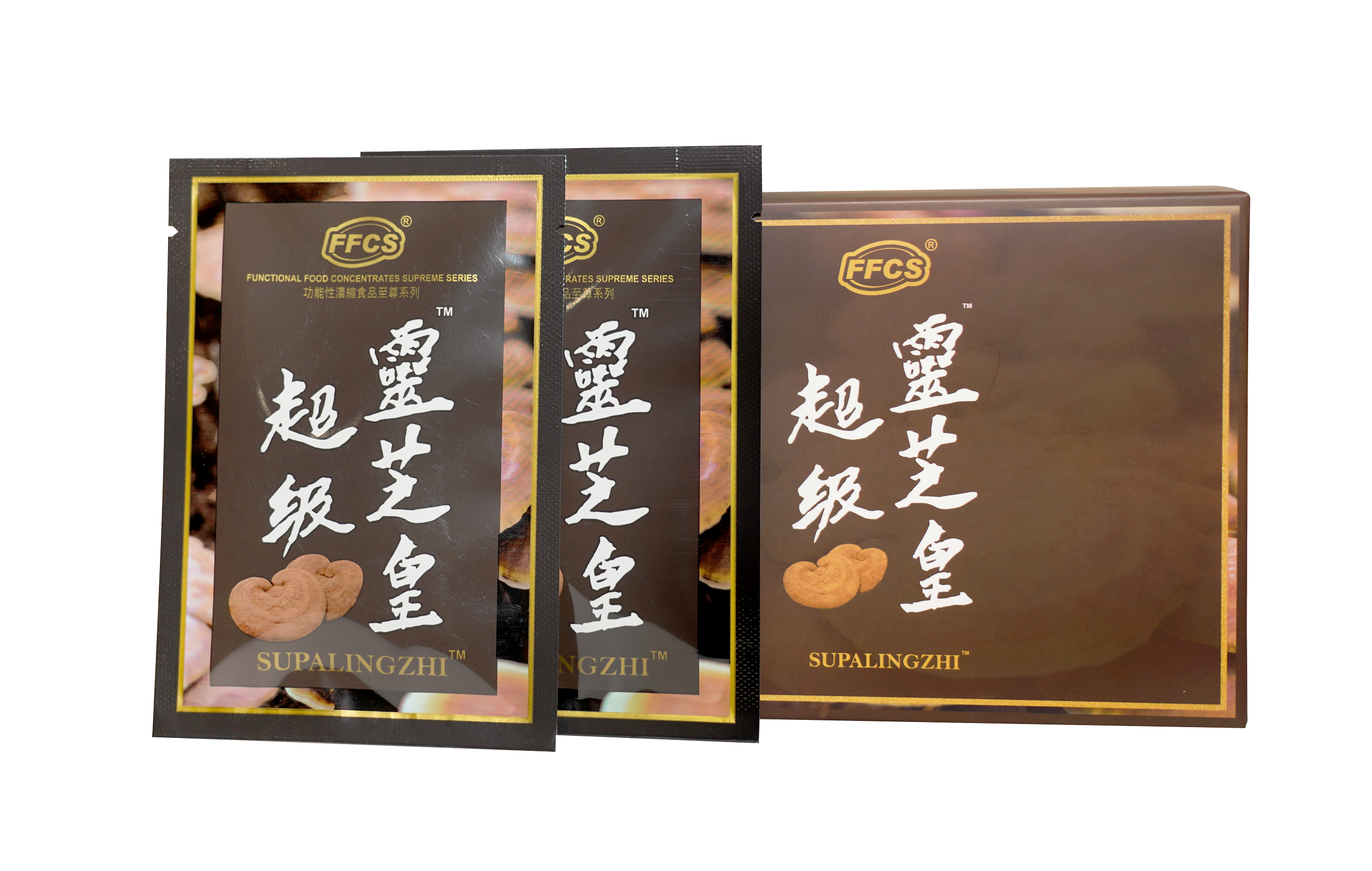
12 Mar SUPALINGZHI
產品
Functional Food Concentrates Supreme Series
SUPALINGZHI
Prevents cell breakage and DNA damage, may assist in alleviating side effects during or after chemotherapy, radiation therapy, or surgery
Ingredients:
Lingzhi, Dansen, Rhubarb, Arginine, Taurine
Retail Price: $1400(10 sachet per box)
SupaLZ Plantation & Highlights of Prof Lin’s Interview
Full ver of Prof Lin’s Interview
SupaLZ Experience Sharing
- Introduction
- Benefits
- Uniqueness
- Ingredients
- Recommended Serving
- Drinking Tips
- Downloadable Booklet
- Downloadable Certificates
- FAQ
- Product Sharing Video
What is Lingzhi?
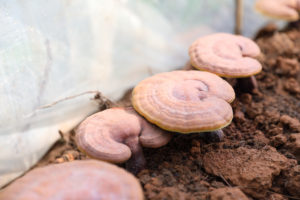
Lingzhi (Ganoderma lucidum) is a kind of fungus under the genus of Ganoderma. It is classified as a noble herb in The Classic of Herbal Medicine, an ancient Chinese book written by Shennong. Lingzhi is a polypore mushroom that is soft, corky and flat, with a conspicuous red-varnished, kidney-shaped cap topped with a cloud-shaped ring pattern; while its bottom is light yellow in colour, attached with a long darkish brown, bright stipe. A Lingzhi could be divided into three parts: mycelium, spore, and sporocarp (cap and stipe included). In particular, only the sporocarp of Lingzhi (Ganoderma lucidum and Ganoderma sinensis) is classified as legal Chinese drug under the Pharmacopoeia of the People’s Republic of China (Volume 1). The efficacy of Lingzhi is determined by its two important active ingredients: Lingzhi polysaccharides and triterpenoids. The higher their amounts, the better the efficacy.
According to The Classic of Herbal Medicine, Lingzhi can boost energy level, improve memory, enhance wisdom and promote longevity. Indeed, Lingzhi not only has been a magical Chinese medicine since ancient times, but also a mascot for the Chinese nation, being the most popular fungus for health care in Chinese history. There have been numerous literatures about Lingzhi since 2000 years ago. Until now, researches from the Chinese and Western medical sectors have proven the efficacy of Lingzhi stated in The Classic of Herbal Medicine. In particular, pharmacological researches have proven its ability to improve heart condition, maintain blood flow towards cardiac muscle, improve circulation of cardiac capillary and stabilize blood lipids, as well as to support its usage of treating hyperlipidemia and coronary heart disease. Also, researches have suggested Lingzhi possesses sedative effect; the ability to improve learning capacity and memory, and could be used to treat neurasthenia and insomnia. Moreover, Lingzhi could be more broadly used to regulate immunity, improve functions of various body organs (e.g. heart, lungs, liver and kidneys) and reduce inflammations, particularly beneficial to patients receiving chemotherapy, radiation therapy or surgery for its detoxification effect. It should be noted, however, Chinese medicine and modern western medicine both emphasize that “prevention is better than cure”. Therefore, regardless of their health status, everyone should consume Lingzhi to maintain good health.
What is SUPALINGZHI?
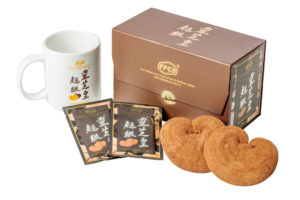
SUPALINGZHI is probably the best Functional Food Concentrates, with a relatively higher concentration of Lingzhi extract within the market. The formula is Lingzhi based, with other constituents added for synergistic and potentiating effect. It is capable of fully protecting body cells, as well as raising overall immunity.
SUPALINGZHI uses log-cultured Lingzhi sporocarp as its main ingredient. Each package contains 2.7 grams of highly-concentrated Lingzhi extract, and other health promoting constituents, including danshen (Salvia miltiorrhiza), arginine, rhubarb and taurine. Our Lingzhi are grown in a standardized, qualified plantation site, which is without any contamination from urban areas. The site is maintained at a low temperature and humidity, provided with sufficient sunlight, and irrigated with natural mountain water from national protected ecological sites, to guarantee that our Lingzhi is grown with the best nutrients. The sporocarps are collected upon maturity and before spore ejection for its best quality.
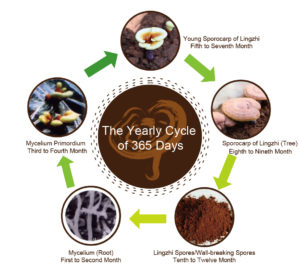
Before inoculation, every wood log would be placed in a sterilized room to ensure the absence of harmful fungal growth, other than Lingzhi mycelium upon inoculation. Each wood log would be used only once for incubating Lingzhi. The wood logs would be soften and became rotten after collection of Lingzhi sporocarp, as all the nutrients of the whole wood log would be utilized and consumed by the Lingzhi. As a result, our Lingzhi achieves better quality than those using bag-cultured method, with more and better active ingredients, including polysaccharides and triterpenoids. From the very beginning of choosing our breeding species, to the very last packaging process, we adopt the strictest hygiene system to ensure the safety of our products. In addition, our unique extraction method prevents active ingredients from being destroyed, resulting in its purity close to 100%. A complex formula (danshen, arginine, rhubarb and taurine) enhanced the effect of health protection by its synergistic effect. Our SUPALINGZHI not only helps to protect DNA, but also is capable of alleviating the side-effects from chemotherapy, radiation therapy and surgery (vomiting, insomnia, headache, loss of appetite, etc.), protecting the liver, enhancing metabolism, promoting regeneration of liver cells, regulating immunity, repairing body cells, and may assist in inhibiting tumor activities, detoxification and lowering the risk of carcinogenesis.
7 Benefits of SUPALINGZHI
-
Prevents cell breakage and DNA damage
-
May assist in alleviating side effects during or after chemotherapy, radiation therapy, or surgery
-
May assist in stabilizing blood lipids, blood sugar and cholesterol
-
Helps enhance immune system
-
Helps improve sleeping quality
-
Helps promote cardiovascular health
-
Helps protect liver and liver cells
* This product is not registered under the Pharmacy and Poisons Ordinance or the Chinese Medicine Ordinance. Any claim made for it has not been subject to evaluation for such registration. This product is not intended to diagnose, treat or prevent any disease.

Uniqueness of SUPALINGZHI
-
Only the cap of the Lingzhi sporocarp, which contains the highest concentration of active ingredients (e.g. triterpenoids) is extracted for the best product quality. In this way, our product’s efficacy of preventing cellular DNA from being damaged is higher than the powdered Lingzhi spores, which typically has lower concentrations of triterpenoids.
-
In terms of raw material, the more costly “log-cultured method” to cultivate our Lingzhi is chosen, as it provides a more natural habitat similar to that of wild Lingzhi. Though it requires a longer cultivation than “bag-cultured method”, a better quality of Ling Zhi, containing higher concentration of polysaccharides and triterpenoids, is obtained.
-
State-of-the-art technology: ultrafine grinding of biological enzymes technique to increase its biological activity; patented dynamic countercurrent extraction method to optimize its extraction quality; nano-extration method to preserve active ingredients under low temperature; high-speed spraying machine to achieve nearly 100% purity of extracts without adding other substances; 3D-mixing technique to allow higher solubility of product.
-
Higher concentrations of Lingzhi than most products in the market. The total concentration of Lingzhi extracts in our product (2.7g of Ganoderma lucidum) is equal to one medium-size Lingzhi fungus, weighing 40-43 grams – larger than the size of a fist.
Ingredients
Lingzhi, Dansen, Rhubarb, Arginine, Taurine
1 time daily, 1 sachet each time. Can take more according to personal need.
1. Mycelium, spore, and sporocarp, which is better?
Firstly, we should understand the morphological differences of the three structures – mycelium, spore and sporocarp. The primary function of the structure of Lingzhi is to produce sexual spores, so as to carry out reproduction. A mature Lingzhi will eject spores, which would germinate upon suitable temperature and humidity. With adequate nutrients, spores would grow into mycelium by self-division and replication. As the mycelium further grows, it would mate with another mycelium of the same species but opposite sex, resulting in a double-nucleated mycelium. These double-nucleated mycelia would bind together to grow into a stipe, a cap and eventually a whole sporocarp. Therefore, mycelium, spore and sporocarp are in fact three different growing stages of Lingzhi.
In terms of their respective ingredients, the mycelium mainly consists of Lingzhi polysaccharides, yet it is lack in triterpenoids. Compared with spores, the sporocarp contains more soluble polysaccharides, which can be easily absorbed by humans due to its resemblance with human morphology. In a research conducted by LIN, Shu-chin, a Chinese expert in Lingzhi, different ratios between sporocarp extract and spores in powder form were tested for their concentrations of Lingzhi polysaccharides. The results revealed that lower concentration of Lingzhi polysaccharides was found with higher proportion of powdered spores. On the other hand, a higher proportion of sporocarp extract resulted in higher concentration of Lingzhi polysaccharides. Thus, the results showed that the sporocarp possesses the highest pharmacological value. Besides, the research also showed that higher concentration of active ingredients could be found when the cap of the sporocarp was used. Conclusively, the sporocarp is the most efficacious when compared to the mycelium and spores.
-01-300x262.jpg)
2.What is the difference between powdered Lingzhi and powdered Lingzhi spores? Would “wall-broken Lingzhi spores” be better?
First of all, powdered Lingzhi is extracted from the sporocarp; whereas powdered Lingzhi spores only consists of the spores ejected from the matured Lingzhi. Therefore, they should not be regarded as the same.
“Wall-broken Lingzhi spores” arises from the theory that since most of the active ingredients are present in the wall of the Lingzhi spores, humans cannot fully absorb them after ingestion, and that the wall should be broken so as to better utilize the Lingzhi spores (wall-breaking). However, it should be noted that about 90% of the powdered wall-broken Lingzhi spores are chitin, which cannot be absorbed by humans either. In addition, both concentrations of Lingzhi polysaccharides and triterpenoids in wall-broken Lingzhi spores are lower than those in sporocarp. For example, sporocarp contains about 10% of Lingzhi polysaccharides, while powdered wall-broken Lingzhi spores only contains less than 1%. Although powdered wall-broken Lingzhi spores may enhance the effect of sporocarp, the synergistic effect has not been fully understood yet. On the other hand, since spores contain saturated and unsaturated fatty acids, the powdered wall-broken Lingzhi spores are prone to oxidation if the wall-breaking process is carried out improperly, which may reduce its purity and efficacy, and may even pose harm to humans if consumed. In fact, some manufacturers may even include secondary ingredients as supplementation. However, despite some advertisements may include unproven or even false information, the pharmacological activity and health value of wall-broken Lingzhi spores are still incomparable with powdered Lingzhi. Indeed, relevant information should be obtained from publications written by experts, or articles from qualified journals.
3.Wild Lingzhi VS Incubated Lingzhi?
People may generally deem wild Lingzhi as rarer and more valuable; therefore it should provide a higher pharmacological value. However, some scientific researchers hold opposite views. Firstly, there are more than 70 species of wild Lingzhi identified until now, of which many have not been studied for their efficacy and pharmacological value. In fact, many wild Lingzhi may have been damaged by worms, and may even be colonized by polypores, which may possess toxins harmful to humans. In addition, there has been no evidence that wild Lingzhi possesses higher pharmacological value than incubated Lingzhi. Secondly, same as other mushrooms, wild Lingzhi grows in the form of parasitism or saprophytism. Lingzhi itself cannot detect whether its host is toxic. As a result, wild Lingzhi can be polluted and contaminated easily. Due to its huge variety, it is difficult to test individually, and the origin, species, quality of wild Lingzhi is therefore hard to be guaranteed. Lastly, as a typical Lingzhi has a life cycle of 1-2 years, the sporocarp of Lingzhi will be lignified if it has not been collected after maturation, its active ingredients and pharmacological value will be reduced too. Therefore, the safety level and the pharmacological value of wild Lingzhi cannot be guaranteed.
4.How to obtain the best Lingzhi by incubation?
The process of obtaining the best Lingzhi starts with the breeding process. It is important to know that Lingzhi spores have two different sexes with four sub-units: a1, a2, b1 and b2. In particular, only the combination of a1 and b2, or a2 and b2, could successfully mate and produce sporocarp. The spores ejected from the bottom of the sporocarp are first collected to breed strains, which are then cultivated in a test tube into mother strain with aseptic technique. The mother strain is then further inoculated onto a piece of sterilized wood from broadleaf trees. Sterilization is important to prevent environmental contamination as wild wood logs generally contain harmful fungi including Penicillium species. After the wood log is fully and successfully grown with mycelium, it will be put into specially designed soil for incubation under suitable environment. As different factors including temperature, humidity, light intensity, soil and water quality could easily affect the quality of Lingzhi, it must be strictly monitored throughout the whole incubation process in order to obtain the best sporocarp.
Currently, there are two incubation methods: the “log-cultured method” mentioned above and the “bag-cultured method”. However, as Lingzhi is originated from broadleaf trees, using natural, uncontaminated broadleaf tree logs can better resemble the natural habitat of Lingzhi, providing better nutrients to the incubated Lingzhi than using the “bag-cultured method” (which typically includes corn cores, cottonseed hulls, bacteria, sawdust, sugar cane bagasse, wheat bran, gypsum powder and calcium carbonate).
5.As formula contains emodin from rhubarb, does it have laxative effect?
After processing, the emodin level in rhubarb is reduced drastically. Anthraquinone in emodin is transformed from its radical form to conjugated form during processing, reducing its laxative effect. From the perspective of Chinese medicine, rhubarb can help improving circulation and detoxification.
6.As formula contains purine, is SUPALINGZHI suitable for people with gout?
Fungus typically has a thin cell wall, which can accommodate numerous cell nuclei, holding high levels of purine. Lingzhi, however, has a thick cell wall, which limits the level of purine due to cell compression. Moreover, as purines are conjugated macromolecules, the level of purine in our Lingzhi powder is further reduced during extraction process. On the other hand, Lingzhi can help in regulating body’s metabolic function and boosting immunity, improving one’s condition.
7.What is “Five-colour Lingzhi”?
“Five-colour Lingzhi” arises from the classification of Lingzhi, according to its colour (red, blue, brown, white and black) in The Classic of Herbal Medicine. However, modern researches have suggested that brown and white Lingzhi are in fact not fungus from the Ganoderma genus.
8.Who is suitable to consume SUPALINGZHI?
-
Suitable to those who are receiving or have received chemotherapy, radiation therapy or surgery
-
People with low immunity or frequent sickness
-
Suitable to people concerned about blood lipids, blood sugar and blood pressure
-
People concerned about cardiovascular health and blood circulation
-
People with poor sleeping quality
-
People with decreased liver function
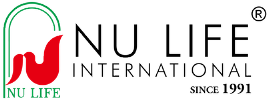


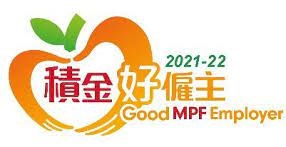


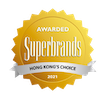

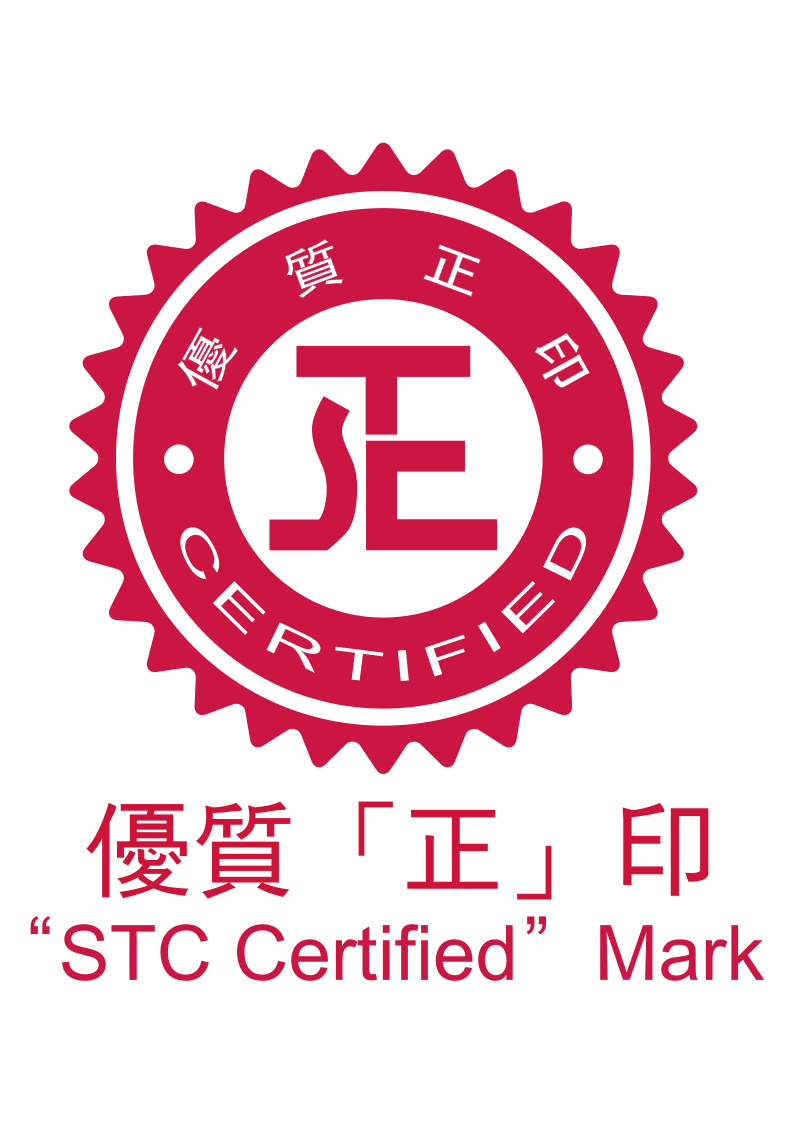
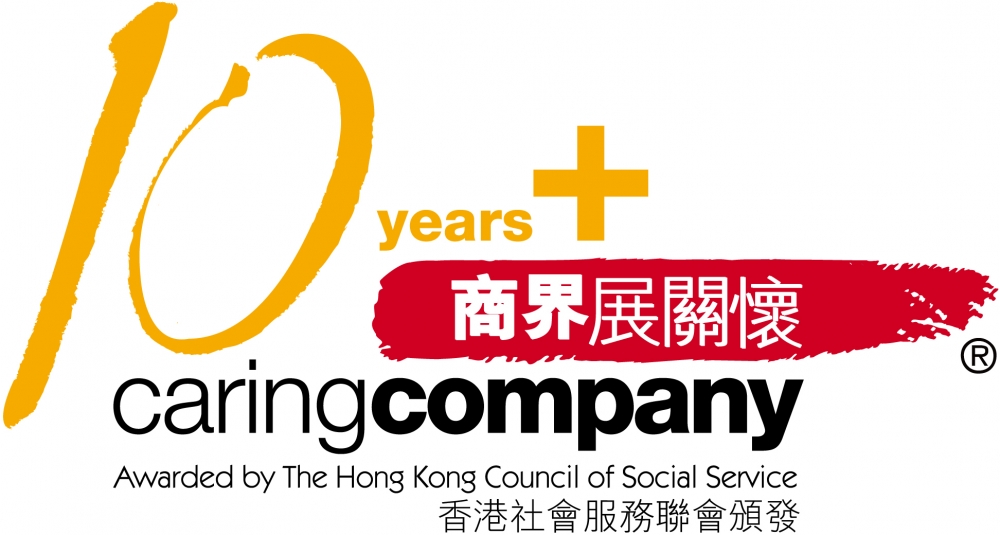




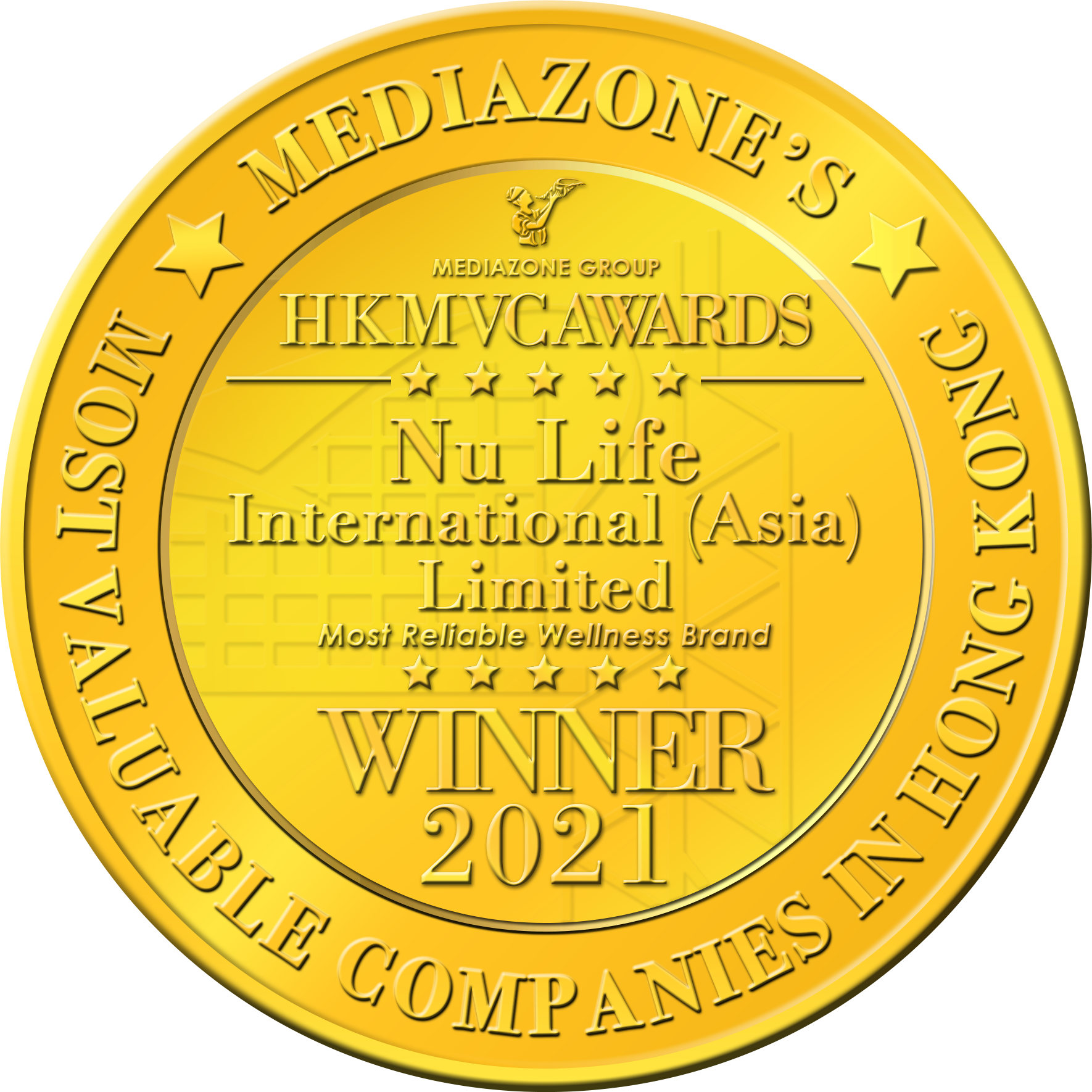
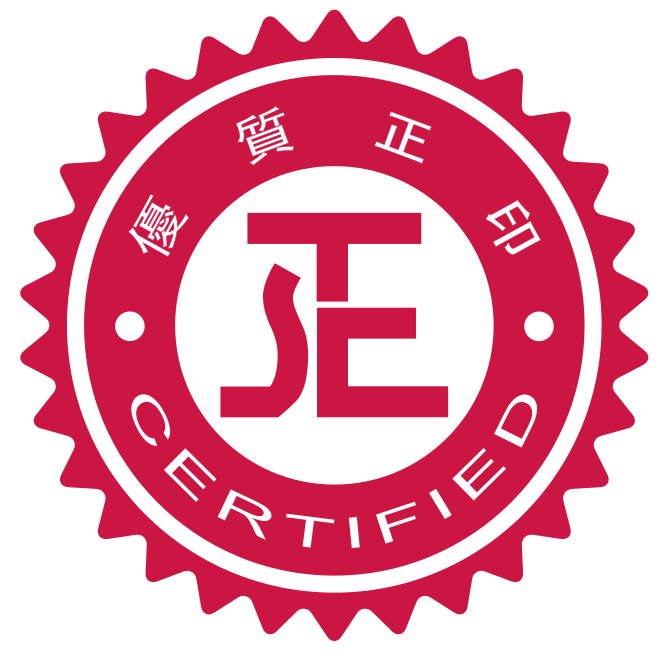
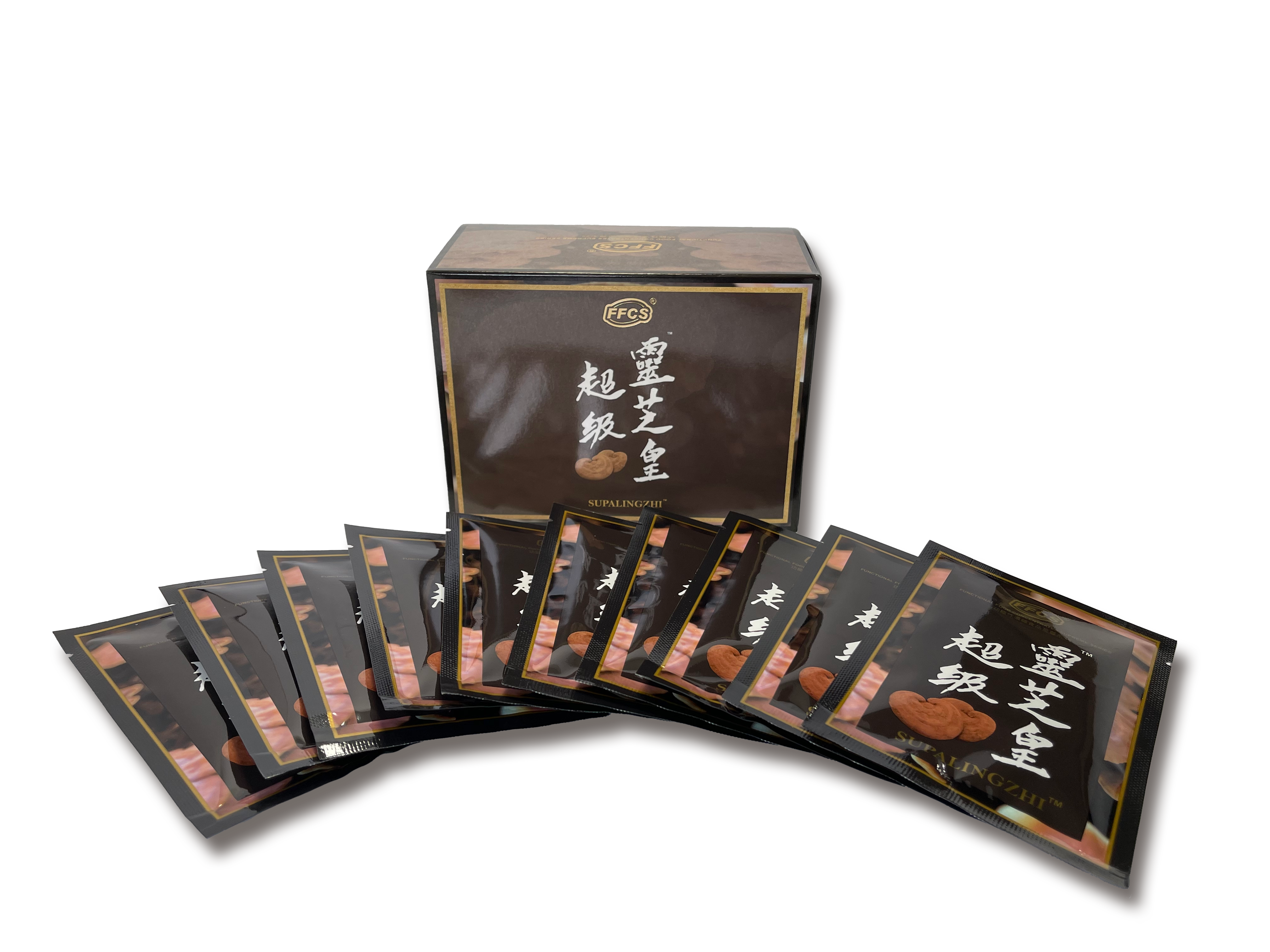
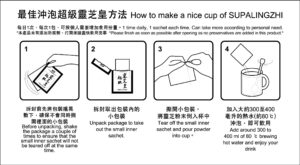
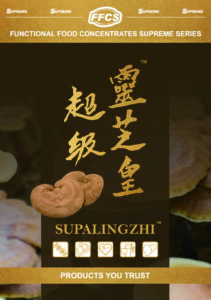
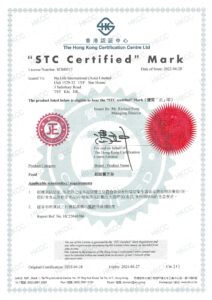
Sorry, the comment form is closed at this time.